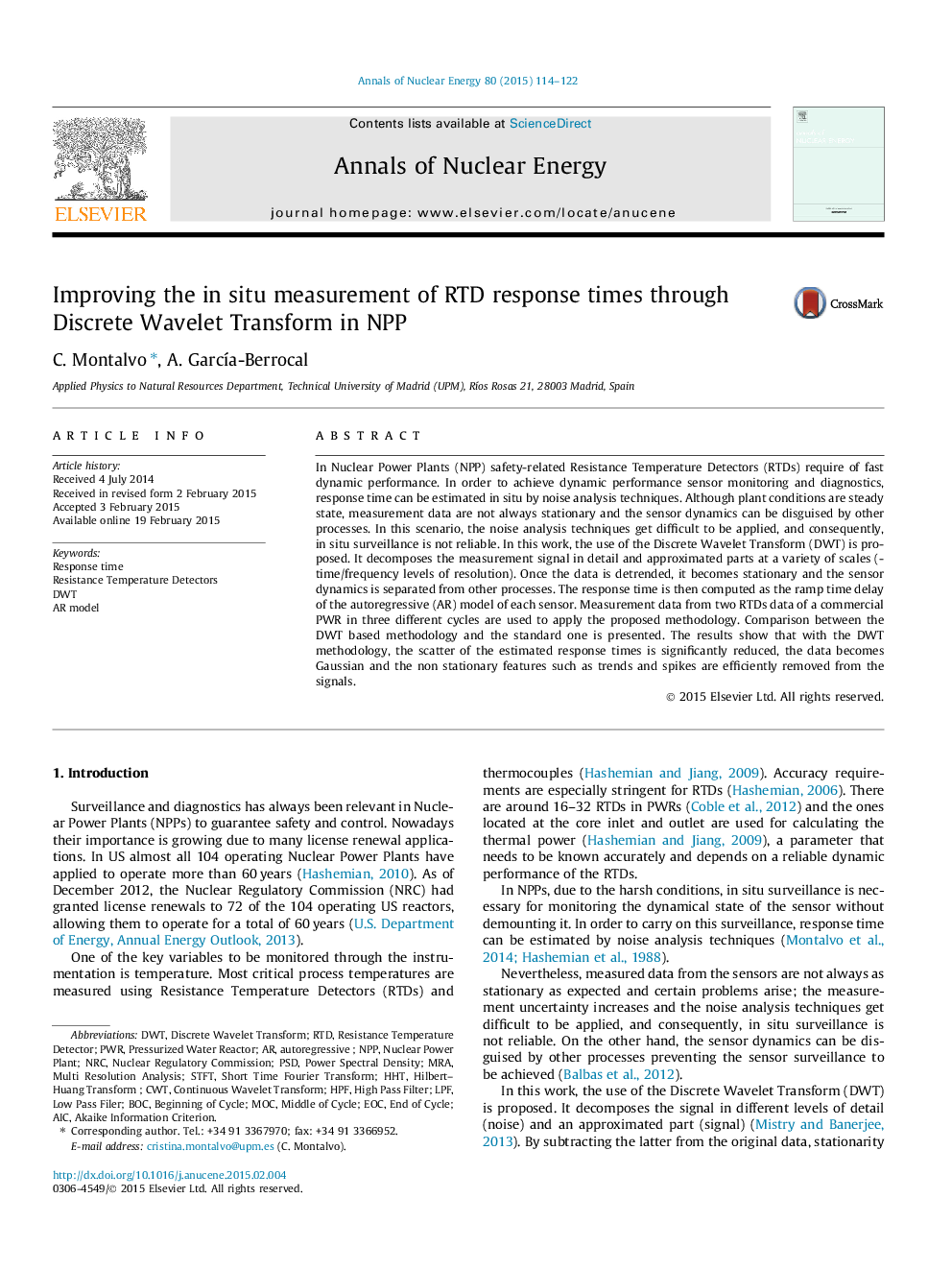| کد مقاله | کد نشریه | سال انتشار | مقاله انگلیسی | نسخه تمام متن |
|---|---|---|---|---|
| 8068713 | 1521118 | 2015 | 9 صفحه PDF | دانلود رایگان |
عنوان انگلیسی مقاله ISI
Improving the in situ measurement of RTD response times through Discrete Wavelet Transform in NPP
دانلود مقاله + سفارش ترجمه
دانلود مقاله ISI انگلیسی
رایگان برای ایرانیان
کلمات کلیدی
RTDMulti resolution analysisPWREOCHHTBOCMOCDWTSTFTMRAhpfNPPLPFPSDAICCWTNRCresistance temperature detector - آشکارساز دمای مقاومتResistance Temperature Detectors - آشکارسازهای دما مقاومتBeginning Of Cycle - آغاز چرخهContinuous wavelet transform - تبدیل موجک مداومDiscrete wavelet transform - تبدیل موجک گسستهHilbert–Huang transform - تبدیل هیلبرت هوانگPower spectral density - تراکم طیفی قدرتAutoregressive - خودپندارهPressurized Water Reactor - راکتور آب تحت فشارResponse time - زمان پاسخHigh pass filter - فیلتر عبور بالاAR model - مدل ARAkaike information criterion - معیار اطلاعاتی آکائیکnuclear power plant - نیروگاه هستهایEnd Of Cycle - پایان چرخهNuclear Regulatory Commission - کمیسیون تنظیم مقررات هسته ایShort time Fourier transform - کوتاه مدت تبدیل فوریه
موضوعات مرتبط
مهندسی و علوم پایه
مهندسی انرژی
مهندسی انرژی و فناوری های برق
پیش نمایش صفحه اول مقاله

چکیده انگلیسی
In Nuclear Power Plants (NPP) safety-related Resistance Temperature Detectors (RTDs) require of fast dynamic performance. In order to achieve dynamic performance sensor monitoring and diagnostics, response time can be estimated in situ by noise analysis techniques. Although plant conditions are steady state, measurement data are not always stationary and the sensor dynamics can be disguised by other processes. In this scenario, the noise analysis techniques get difficult to be applied, and consequently, in situ surveillance is not reliable. In this work, the use of the Discrete Wavelet Transform (DWT) is proposed. It decomposes the measurement signal in detail and approximated parts at a variety of scales (time/frequency levels of resolution). Once the data is detrended, it becomes stationary and the sensor dynamics is separated from other processes. The response time is then computed as the ramp time delay of the autoregressive (AR) model of each sensor. Measurement data from two RTDs data of a commercial PWR in three different cycles are used to apply the proposed methodology. Comparison between the DWT based methodology and the standard one is presented. The results show that with the DWT methodology, the scatter of the estimated response times is significantly reduced, the data becomes Gaussian and the non stationary features such as trends and spikes are efficiently removed from the signals.
ناشر
Database: Elsevier - ScienceDirect (ساینس دایرکت)
Journal: Annals of Nuclear Energy - Volume 80, June 2015, Pages 114-122
Journal: Annals of Nuclear Energy - Volume 80, June 2015, Pages 114-122
نویسندگان
C. Montalvo, A. GarcÃa-Berrocal,